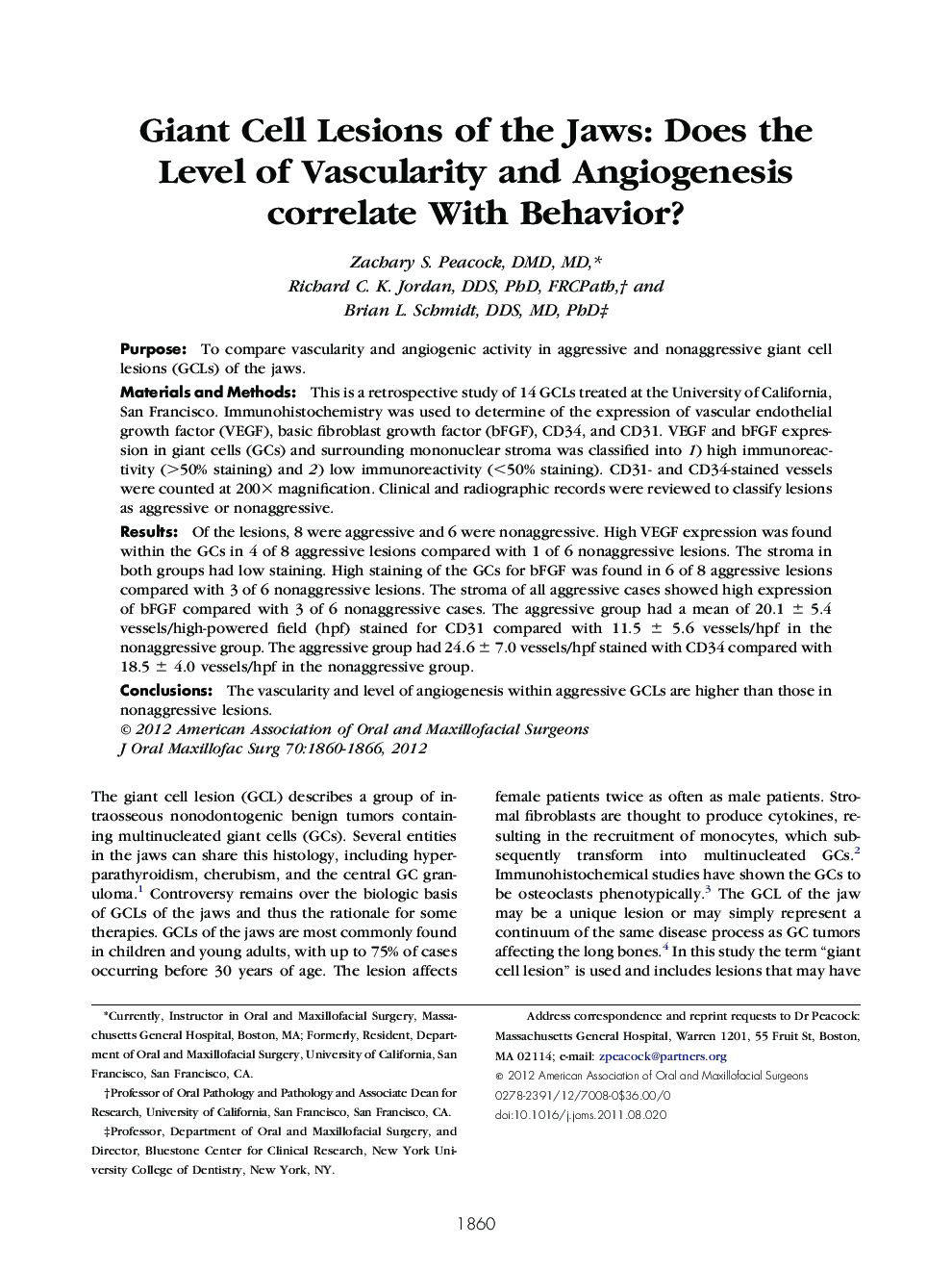| Article ID | Journal | Published Year | Pages | File Type |
|---|---|---|---|---|
| 3152960 | Journal of Oral and Maxillofacial Surgery | 2012 | 7 Pages |
PurposeTo compare vascularity and angiogenic activity in aggressive and nonaggressive giant cell lesions (GCLs) of the jaws.Materials and MethodsThis is a retrospective study of 14 GCLs treated at the University of California, San Francisco. Immunohistochemistry was used to determine of the expression of vascular endothelial growth factor (VEGF), basic fibroblast growth factor (bFGF), CD34, and CD31. VEGF and bFGF expression in giant cells (GCs) and surrounding mononuclear stroma was classified into 1) high immunoreactivity (>50% staining) and 2) low immunoreactivity (<50% staining). CD31- and CD34-stained vessels were counted at 200× magnification. Clinical and radiographic records were reviewed to classify lesions as aggressive or nonaggressive.ResultsOf the lesions, 8 were aggressive and 6 were nonaggressive. High VEGF expression was found within the GCs in 4 of 8 aggressive lesions compared with 1 of 6 nonaggressive lesions. The stroma in both groups had low staining. High staining of the GCs for bFGF was found in 6 of 8 aggressive lesions compared with 3 of 6 nonaggressive lesions. The stroma of all aggressive cases showed high expression of bFGF compared with 3 of 6 nonaggressive cases. The aggressive group had a mean of 20.1 ± 5.4 vessels/high-powered field (hpf) stained for CD31 compared with 11.5 ± 5.6 vessels/hpf in the nonaggressive group. The aggressive group had 24.6 ± 7.0 vessels/hpf stained with CD34 compared with 18.5 ± 4.0 vessels/hpf in the nonaggressive group.ConclusionsThe vascularity and level of angiogenesis within aggressive GCLs are higher than those in nonaggressive lesions.
